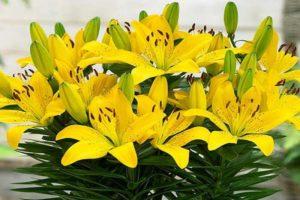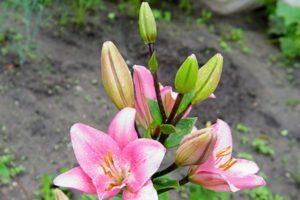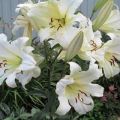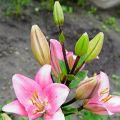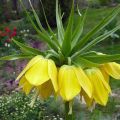Description and characteristics of the Regale lily variety, planting and care in the open field
Florists, through selection and hybridization, create new varieties of ornamental plants to decorate the natural landscape. Wild species are used as parents. The sophistication of the luxurious Regale lily flowers is the creation of Mother Nature. The plant was introduced into the culture unchanged, it is so beautiful, and also unpretentious in breeding and growing.
History of origin
The habitat is rocky spurs in the Sichuan province. Huge snow-white flowers with a strong pleasant fragrance served as the basis for the name Regale, which means regal. Lilia Regale was introduced to culture in 1910 in the United States. The researcher of the Chinese flora, E. Wilson, sent the bulbs of the plant to England in 1903, where they took root and bloomed. In England, the plant did not spread. Wilson sent several thousand bulbs to Massachusetts, where the lily began to be bred and grown as an ornamental flower.
Dutch flower growers became interested in the new species. 15 years after an English botanist discovered a new daylily, Regale became the most popular of its kind in Europe. The wild-growing form became the ancestor of modern lily varieties, united in a group of tubular hybrids.
Description and characteristics of lily Regale
The stem height is from 0.5 to 2.5 meters. Shoots are thin, flexible, leafy. The top and bottom tiers end in racemose inflorescences with fragrant "gramophone". The diameter of the snow-white corolla is from 10 to 20 centimeters, the inner part and the stamens with the pistil are bright yellow. On the outside, the petals are colored light lilac. The number of flowers on the stem is from 5 to 30 pieces. The flowering period is the second half of July. The fruit is a capsule opening from above, filled with translucent seeds.
The leaves are dark green, narrow, leathery, alternating. The bulb is loose, consists of scales, has a diameter of up to 15 centimeters. The scales of an onion dug out of the ground change color from white-pink to burgundy-purple. At the bottom of the bulb, roots grow, reaching lengths of up to 50 centimeters. Here division takes place: new bulbs are formed, which eventually separate from the mother. In the center of the bulb is a growing point from which a single stem grows.

Pros and cons of the variety
Lily bulbs can withstand soil freezing up to -15 degrees, subject to gradual frostbite and thawing. In culture, Regale can give 30 large, heavy flowers, under the weight of which a tall stem breaks off. To preserve the decorativeness of the plant, support or removal of part of the buds is required.
Features of growing flowers
If you do not adhere to the growing conditions of lilies, then the flowers lose their shape, become smaller. Dig Regale in the fall, using a pitchfork, so as not to damage the root system. For planting next year, the bulbs are stored in a dry place at a temperature not higher than +8 degrees. For autumn planting, the bulbs are placed in prepared holes.
In the first season, the bulbs develop a root system and a flowering stem grows. Flowering begins the next year.
Choosing a landing site
Regala requires an area that is well lit by the sun throughout the day. For its thin stems, weighed down with luxurious inflorescences, strong drafts are not desirable. For a perennial, a place is chosen where it will grow for 5 years.

The soil layer should be loose, well-absorbing water, air-permeable, saturated with nutrients. Lilies do not tolerate additives that increase the acidity of the soil. Organic fertilizers (rotted manure) are applied once, before planting the bulb.
Bulb selection
For planting, choose dense, no damage, with a well-developed root system of Regale bulbs. Before planting the bulbs in the ground, they are disinfected in a solution of manganese (several grains per liter of water) for 30 minutes. After drying, the roots are trimmed, leaving the shoots 5 centimeters long.
Planting process
Bulbs in open ground are planted in groups: the distance in the rows is up to 20-25 centimeters, in the row spacing - 30-40 centimeters. The depth of the hole depends on the size of the bulb: 15-25 centimeters. Landing time is May-September. In temperate climates, the planting site, seedlings should be protected from frost on the soil.

Plant care recommendations
The Regale lily is not immune to the return colds in May. The top of the plant with flower buds is irretrievably destroyed. Cover the plant with paper or plastic caps. It is equally important to follow the cultivation techniques and preparation of flowers for the winter cold. To slow down the emergence of seedlings of bulbs planted in autumn, a snow cover with sawdust is used, which does not allow the soil to warm up.
How to water properly
Moisten the soil under the lilies, depending on the temperature, air humidity from May to the end of July. Regale does not tolerate dry and waterlogged soil. Water contact with leaves and flowers causes burns. Irrigation should be done in the morning, if the top layer of the earth has dried out by 2-3 centimeters. With the cessation of budding, watering ends.
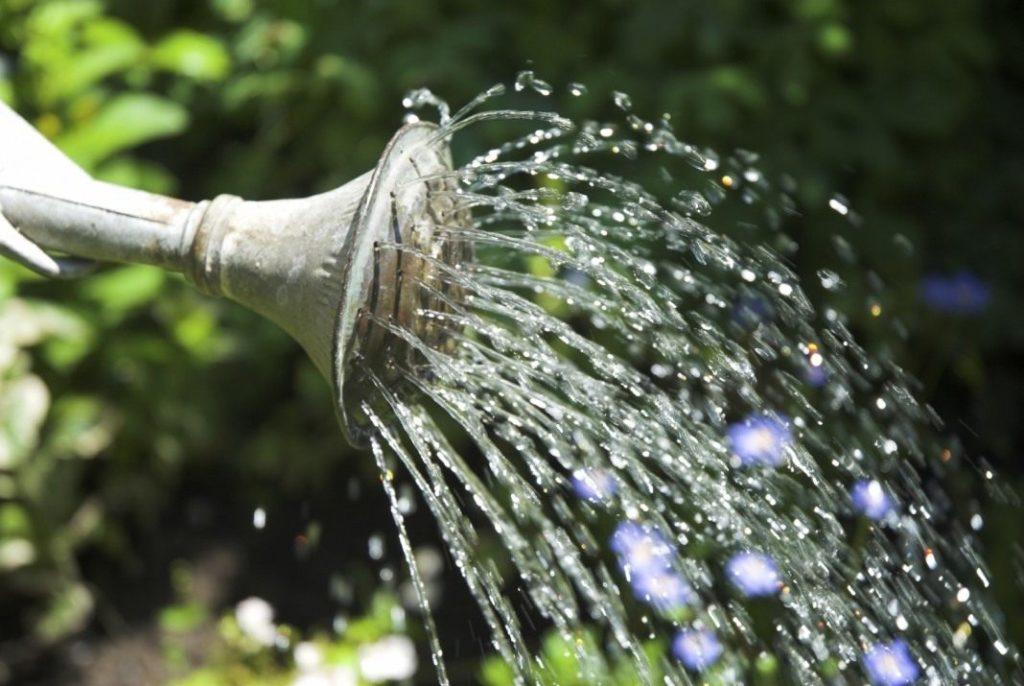
Mulching
Soil mulching is used if lilies are planted in a separate group in a flower bed. After planting the bulbs, the holes are covered with a layer of dry peat, straw, sawdust of deciduous trees. Coniferous sawdust is not used for mulching so as not to acidify the soil. Wood ash is added to peat for the same purpose.
If Regale grows among perennials, then the landing site does not require additional protection.
How to fertilize
For feeding Regale, mineral fertilizers are used so as not to infect the bulbs. At the beginning of the lily growing season, calcium nitrate is needed (1/4 teaspoon for half a bucket of water). Fertilizer is applied to the soil after watering 2 times with a 2-week break. For abundant flowering in July, plants are supported with full mineral fertilizer (2 times a month during watering): 30 grams per bucket of water. With the end of flowering, phosphorus and potash fertilizers are applied once.
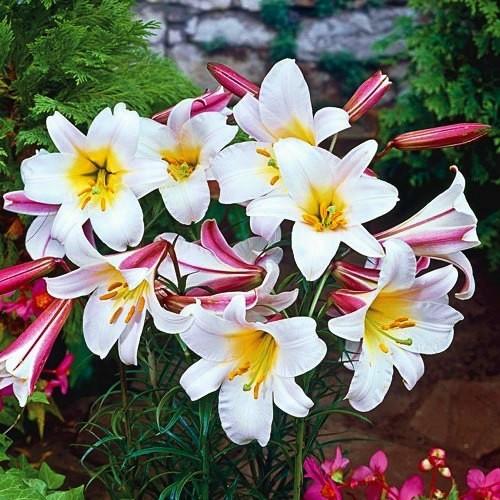
Preparing for winter
By winter, the aerial parts of the plant die off. A bulb remains in the ground, in which a growth point for the future period has formed during the warm period, and a supply of nutrients is in the scales. Lily is a hardy plant. In regions with warm winters, it is not necessary to protect the bulbs from freezing. In other areas, the flower bed is covered with a thick layer of foliage, spruce branches.
Protection from diseases and pests
In Regale lily, a fungal and viral infection affects not only the aerial part, but also the bulb. Fungal infection, foci of the disease:
- rust - leaves;
- penicillosis - all parts;
- blue mold - bulbs;
- gray rot - leaves, stems;
- phytium - roots;
- rhizoctonia - bulbs;
- anthracnose — all parts;
- fusarium - bulbs.
With the exception of gray mold, infection cannot be overcome. The flower should be dug up and burned, the soil should be changed, or nothing should be planted in this place for 5 years. Prevention is a healthy planting material. Through aphids, viral infection occurs with mosaics, variegation, rosette. Diseased plants are destroyed. Prevention - the fight against aphids.

Lily pests:
- aphid;
- spider mite;
- lily fly;
- beetle larvae;
- lily rattle.
Control methods - timely insecticide treatment.
How to propagate correctly
Lilies are propagated by seeds, children, scales. Seeds can be planted in March and transplanted or sown outdoors in May. In the first case, planting is carried out in a container with sandy-humus soil in rows to a depth of 2 centimeters. Shoots appear on the 20th day. In May, the grown seedlings are transplanted to a permanent place.
Seeds are sown in open ground in the same way as for seedlings. To retain moisture, the soil is mulched until shoots appear. The division of the bulb is carried out in the 5th year. By this time, additional bulbs ripen and give flowering stems. The bulb is divided when it is at rest and the aerial part dies off. After removing from the ground, the bulbs are separated from one another and planted in prepared places.
Examples of use in landscape design
Lilies are planted in a separate group in the center of the flower bed, next to low-growing annuals or perennials. Regale in this case is the main color accent that sets off the lower decorative tier. When planted among tall plants, lilies with their snow-white texture emphasize the shades of perennials growing nearby. Regala is not recommended to be planted in the shade of trees.
